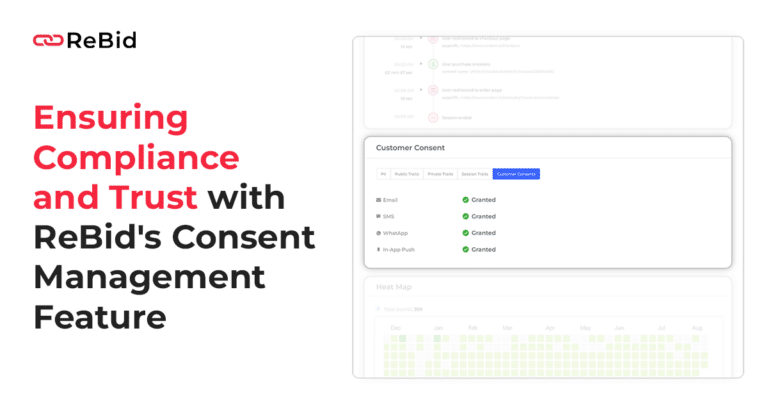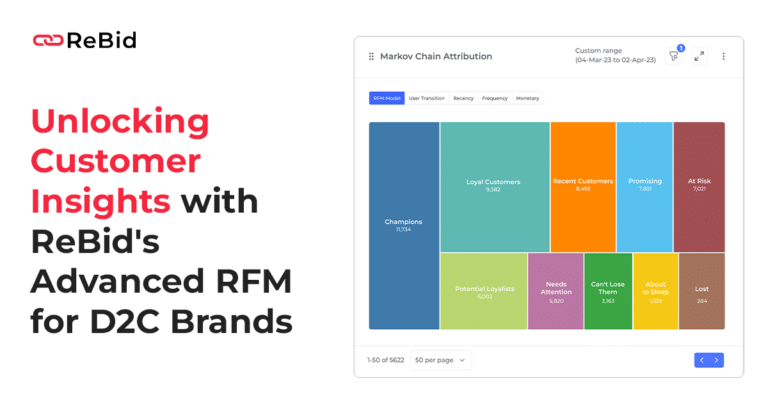The Problem with Disconnected Customer Data
In today’s ever-evolving digital realm, marketers are confronted with the perplexing challenge of contending with disconnected customer data. This enigma arises when vital information regarding consumers is strewn across myriad platforms and systems, rendering it arduous for marketers to obtain a comprehensive comprehension of their target demographic.
Envision this intricate scenario: a patron completes a transaction on your e-commerce website, yet the particulars pertaining to that purchase become ensconced within an entirely disparate database from the one housing their contact details. Consequently, you find yourself grappling with an inability to forge connections and tailor a personalized experience for said patron. The repercussions? You may inadvertently forego opportunities to recommend complementary products or proffer targeted promotions, ultimately impinging upon your financial bottom line. This disjointed nature of customer data not only impedes your capacity to captivate and retain patrons but also constrains your marketing endeavors from attaining their full potential.
Yet another consequence stemming from disconnected customer data is the incapability of constructing accurate consumer profiles. Let us suppose that a client interacts with your brand through various channels – perusing your website, engaging with social media content, and completing purchases in-store. In light of lacking a unified perspective encompassing their engagements across these touchpoints, you are left clutching fragmented fragments about who they truly are and what precisely they desire. This lackadaisical assemblage of customer profiles begets an arduous predicament for marketers seeking to personalize messaging and offers effectively. And what does this bring about? Customers may feel misconstrued and disengaged which could precipitate diminished loyalty levels alongside diminished advocacy efforts
• Disconnected customer data makes it difficult for marketers to understand their target demographic
• When information is scattered across different platforms and systems, it hinders the ability to create personalized experiences for customers
• Marketers may miss out on opportunities to recommend complementary products or offer targeted promotions, impacting their bottom line
• Disconnected customer data also prevents accurate consumer profiling, making it challenging to personalize messaging and offers effectively
• Customers may feel misunderstood and disengaged, leading to decreased loyalty levels and advocacy efforts.
Understanding the Impact of Data Fragmentation in Marketing
In today’s perplexing and bursty digital realm, marketers find themselves heavily reliant on customer data to make informed decisions and craft targeted campaigns. However, lurking in the shadows is a formidable obstacle known as data fragmentation. This enigmatic phenomenon occurs when customer data becomes scattered across various systems and databases, creating a bewildering puzzle that hinders obtaining a comprehensive understanding of the customer.
Picture this: A customer makes a purchase on your e-commerce website, yet their browsing history and preferences are confined within the confines of an entirely separate CRM system. Deprived of an integrated vantage point encompassing this disparate information, you may encounter difficulties personalizing their experience or comprehending their purchasing behavior. This lack of cohesive knowledge acts as an insidious barrier obstructing your marketing endeavors, preventing you from delivering pertinent messages to individuals precisely when they need them.
Data fragmentation not only impedes personalized marketing initiatives but also begets missed opportunities and squandered resources. Consider this scenario: A faithful patron’s contact details reside within one system while their transaction history resides elsewhere. As a consequence, you may unwittingly miss out on dispatching tailored offers or rewards to these loyal customers – leading to potential loss in revenue and waning loyalty.
To combat this vexatious issue head-on, it behooves marketers to invest in strategies that interweave and standardize customer data. By harnessing cutting-edge technologies and tools capable of amalgamating disparate sources of information into one harmonious whole, you can attain an all-encompassing perspective of your customers’ intricacies – empowering you to make astute decisions driven by concrete evidence. In the forthcoming sections, we shall embark upon an expedition into the root causes behind data fragmentation, navigate through its myriad challenges, ultimately uncovering the paramount significance attached to data standardization within the realm of marketing itself! Brace yourselves for enlightenment as we unveil the key unlocking the unrivaled power concealed within unified customer data.
• Data fragmentation occurs when customer data is scattered across various systems and databases.
• Lack of integrated vantage point hinders personalization and understanding of customer behavior.
• Missed opportunities and wasted resources can result from data fragmentation.
• Investing in strategies that interweave and standardize customer data is crucial to combatting this issue.
• Cutting-edge technologies and tools can amalgamate disparate sources of information into a cohesive whole.
• Data standardization is paramount for making informed decisions driven by concrete evidence.
The Consequences of Incomplete Customer Profiles
When it comes to grasping the complexities of customers and targeting them in a manner that truly captivates, having profiles that are complete and accurate becomes an absolute necessity. However, the ramifications of incomplete customer profiles can be quite profound. Picture this: a company possesses only rudimentary information about their customers; names and email addresses are all they have at their disposal. Bereft of more intricate data, said company is unable to customize their marketing endeavors or tailor their messaging according to individual customer preferences and interests.
Incomplete customer profiles pave the way for missed opportunities and feeble attempts at marketing campaigns. Consider this hypothetical situation: a clothing retailer with incomplete customer profiles sends out a generic email promotion for a sale on women’s dresses. In such cases where gender information is absent from these profiles, there exists the possibility of these emails reaching male customers as well. This not only squanders valuable resources but also results in disgruntled recipients who find themselves receiving irrelevant communications. Without possessing an inclusive comprehension regarding their customers’ particular tastes, purchasing patterns, and demographic details, companies find themselves operating at an undeniable disadvantage within today’s cutthroat marketplace.\n
• Incomplete customer profiles limit the ability to customize marketing endeavors and tailor messaging according to individual preferences and interests.
• Companies with incomplete profiles may send out generic promotions that reach irrelevant recipients, wasting valuable resources.
• Without comprehensive knowledge of customers’ tastes, purchasing patterns, and demographic details, companies operate at a disadvantage in the competitive marketplace.
Exploring the Causes of Data Fragmentation in Marketing
The perplexing issue of data fragmentation in marketing has become a prevalent concern among marketers. It is a conundrum that leaves many grappling with its complexities. The root cause of this quandary lies in the utilization of disparate systems that lack effective communication among themselves. Consider, for instance, a company burdened with separate databases dedicated to email marketing, social media, and customer relationship management (CRM). Consequently, valuable customer data becomes scattered across these disjointed systems, rendering it arduous to obtain a comprehensive understanding of each individual patron.
Let us contemplate the predicament faced by a clothing retailer endeavoring to send out tailored email campaigns to their customers. In the absence of an integrated data system, this retailer may find themselves struggling to gather precise information regarding customers’ attire preferences, purchase history, and preferred channels of communication. This deficiency may result in sending irrelevant offers or promotions to select patrons—an unfortunate outcome leading to subpar customer experiences and potentially lost sales opportunities. Moreover, in the absence of a centralized repository for data collection, tracking the efficacy of marketing endeavors and optimizing strategies becomes an onerous task indeed. Data fragmentation severely restricts a company’s capability to precisely target their audience and deliver personalized messages imbued with significance—messages that will truly resonate with their valued clientele.
• Disparate systems lacking effective communication contribute to data fragmentation in marketing
• Separate databases dedicated to email marketing, social media, and CRM scatter valuable customer data
• Difficulty in obtaining a comprehensive understanding of each individual patron due to disjointed systems
• Clothing retailer may struggle to gather precise information on customers’ preferences and purchase history without an integrated data system
• Sending irrelevant offers or promotions can lead to subpar customer experiences and lost sales opportunities
• Lack of centralized repository for data collection makes tracking efficacy of marketing endeavors challenging
• Data fragmentation hinders capability to precisely target audience and deliver personalized messages
The Role of Siloed Systems in Data Fragmentation
The perplexing nature of siloed systems cannot be overstated when it comes to their contribution to the fragmentation of data in marketing. These systems act as enigmatic islands, each holding a fragment of the intricate puzzle that is customer data, yet utterly devoid of any means to communicate with one another. Envision this: one system diligently collecting information on customer purchases, another dutifully tracking website visits, and yet another faithfully managing customer support inquiries. Alas! Each system operates in solitary confinement, blissfully unaware of the knowledge possessed by its counterparts. Consequently, marketers are left grappling with disjointed and incomplete customer profiles that paint an erroneous picture of their intended audience.
Consider the fictional clothing retailer known as TrendStyle for a moment. In their quest for success, TrendStyle employs one system to monitor online sales while entrusting a separate entity to document brick-and-mortar store transactions. To complicate matters further still, they rely on yet another distinct system for their esteemed customer loyalty program. Individually speaking, these systems offer invaluable insights into varying aspects of TrendStyle’s operations. However, without engaging in meaningful dialogue amongst themselves; precious data remains scattered haphazardly and fragmented beyond recognition. As a consequence thereof arises an arduous challenge faced by TrendStyle’s marketing team – how can they possibly craft targeted campaigns when bereft of unified information? Instead, they resort to generic promotions that fall short in captivating their diverse clientele.
Indeed,the repercussions stemming from such disarrayed data extend far beyond what meets the eye.They deprive marketers from gaining comprehensive insight into consumer behavior and preferences holistically.Consequently,fertile grounds for cross-selling and upselling lay barren,wasting valuable resources on marketing endeavors which may not resonate with specific segments within their audience.Lamentably,this dearth in understanding also impedes personalization efforts,resulting in customers being bombarded relentlessly with irrelevant messages.This ultimately erodes overall brand experience.Leaving one pondering in the era of data-driven marketing,the role played by siloed systems in perpetuating such fragmentation cannot be disregarded.
• Siloed systems act as enigmatic islands, each holding a fragment of customer data
• These systems do not communicate with one another, leading to disjointed and incomplete customer profiles
• Marketers are left grappling with erroneous pictures of their intended audience
• TrendStyle, a fictional clothing retailer, uses separate systems for online sales, store transactions, and loyalty programs
• Without meaningful dialogue between these systems, valuable data remains scattered and fragmented
• The marketing team struggles to craft targeted campaigns without unified information
• Disarrayed data deprives marketers from gaining comprehensive insight into consumer behavior
• Cross-selling and upselling opportunities are wasted on generic promotions
• Lack of understanding impedes personalization efforts and bombards customers with irrelevant messages
• Siloed systems perpetuate fragmentation in the era of data-driven marketing
The Challenges of Integrating Disparate Data Sources
The integration of disparate data sources presents perplexing challenges for marketers. A major obstacle lies in the inherent lack of compatibility between different data systems. Numerous organizations heavily rely on a multitude of tools and platforms to amass and store customer data, including CRM systems, email marketing software, and social media analytics tools. Unfortunately, these distinct systems often operate independently from one another, resulting in a frustrating fragmentation of valuable information.
Picture this scenario: a customer’s email address resides within one system, their purchase history is stored elsewhere, and their social media engagement metrics reside in yet another system entirely. The task at hand becomes an unnerving endeavor as marketers struggle to consolidate these scattered fragments into a cohesive customer profile. Consequently, they are left grappling with incomplete and disjointed data that hinders their ability to develop a comprehensive understanding of customers’ behaviors, preferences, and needs.
Furthermore, the challenge posed by integrating disparate data sources is further compounded by the absence of standardized formats and definitions across systems. Each individual system may employ its own unique method for categorizing and structuring data—rendering effective comparison and combination nearly unattainable. For instance, while one system might adopt a particular coding scheme for product categories, another might gauge customer satisfaction using an entirely different scale altogether. In the absence of standardized approaches, marketers find themselves wrestling with inaccuracies during their attempts to analyze data or extract meaningful insights from it.
• The lack of compatibility between different data systems is a major obstacle in integrating disparate data sources.
• Organizations rely on various tools and platforms to collect and store customer data, leading to fragmentation of valuable information.
• Marketers struggle to consolidate scattered fragments into a cohesive customer profile, hindering their understanding of customers’ behaviors and preferences.
• The absence of standardized formats and definitions across systems further complicates the integration process.
• Each system may have its own unique way of categorizing and structuring data, making effective comparison and combination difficult.
• Inaccuracies arise when trying to analyze data or extract meaningful insights without standardized approaches.
The Importance of Data Standardization in Marketing
In the fast-paced and cutthroat world of marketing today, success hinges upon the elusive key known as data. Marketers depend on this precious resource to guide their decisions, tailor customer experiences, and fuel revenue growth. Yet, an insidious problem lurks in the shadows, haunting many marketing teams: a lack of standardization when it comes to data.
Picture this perplexing scenario: a customer completes an online purchase and later decides to seek clarification on its delivery status by calling the customer support hotline. To their dismay, the service representative finds themselves unable to access any information regarding the order due to incompatible systems that refuse to communicate with one another. As a result, frustration reigns supreme and dissatisfaction festers within the disgruntled customer’s perception of the brand’s inefficiency.
This represents just a single thread in the tangled web spun by data fragmentation—a menace that casts its shadow over marketing efforts far and wide. Without standardized data practices in place, marketers find themselves deprived of a panoramic view of their customers’ lives. Instead, they are left grappling with fragmented profiles that offer but mere glimpses into their target audience’s true essence. Such limitations lead to missed opportunities for personalization and bespoke campaigns—an obstacle thwarting brands from forging deeper connections with their cherished clientele.
But why does this dreaded phenomenon known as data fragmentation plague us so? One common culprit lies within organizations themselves—silos erected between departments breed chaos within our beloved databases. Each team clings onto their own proprietary systems like fiercely guarded treasures; alas! These isolated pockets give rise not only to inefficiencies but also lock away invaluable insights crucial for crafting effective marketing strategies.
Another formidable challenge confronting marketers is integrating disparate sources of data into one harmonious entity—a task akin to taming wild stallions or herding unruly cats! From social media interactions brimming with vitality to website behavior teeming with hidden nuances; even offline transactions whisper tales yearning for inclusion—each touchpoint generates a torrent of data. Alas, unifying this cacophony into a coherent symphony proves daunting indeed! The absence of an integrated ecosystem shackles marketers, preventing them from harnessing the full potential hidden within customer data.
Enter stage left: data standardization to save the day! By establishing a universal set of rules and formats governing the collection, storage, and analysis of our beloved data, marketers can ensure harmony in its ranks. Consistency reigns supreme as accuracy takes center stage—data dances seamlessly across various systems and platforms. This newfound cohesion paves the way for integrating diverse sources of information with ease; like pieces falling perfectly into place within a grand puzzle. Now armed with comprehensive knowledge about their customers, marketers wield newfound power to make informed decisions that propel their strategies towards success.
In conclusion, amidst today’s relentless pursuit of all things data-driven, one truth shines through—a truth emboldened by standardized practices: unity is paramount for marketers. Overcoming hurdles such as fragmented data landscapes and siloed systems becomes possible when we embrace the power found within harmonized insights. By adopting standardized techniques in managing our cherished resource—the lifeblood known as customer data—we unlock the gates leading to personalized experiences that captivate hearts while fueling prosperous outcomes for businesses far and wide.
– Standardized data practices in marketing are crucial for success in today’s fast-paced industry.
– Data fragmentation can lead to inefficiencies and missed opportunities for personalization.
– Silos between departments within organizations contribute to data fragmentation and hinder effective marketing strategies.
– Integrating disparate sources of data is a challenge that marketers face, but it is necessary for a comprehensive understanding of customers.
– Data standardization establishes rules and formats for collecting, storing, and analyzing data, ensuring consistency and accuracy across systems and platforms.
– With standardized practices, marketers have the power to make informed decisions that drive successful strategies.
Unlocking the Power of Unified Customer Data
In the ever-evolving landscape of today’s digital realm, marketers find themselves immersed in a sea of perplexing customer data. The sheer magnitude of this vast information trove is both awe-inspiring and daunting. It is within this tempestuous ocean that lies their ultimate challenge – untangling the enigma and extracting its potential to propel business growth. Enter unified customer data, the beacon guiding them through this tumultuous journey. By seamlessly integrating disparate sources of customer knowledge, such as CRM systems, social media platforms, and website analytics, marketers unearth an unparalleled wealth of insights capable of revolutionizing their marketing strategies.
Picture a world where a marketer embarks on a quest to decipher the intricate behavioral patterns woven by their customers. Armed with fragments of data from website visits detailing pages explored, email campaign records outlining open rates and click-through statistics, and metrics capturing engagement across various social media channels – each piece holds its own value but pales in comparison to what they become when interwoven into one cohesive tapestry. Suddenly, clarity emerges from chaos as hidden patterns reveal themselves; trends materialize before their very eyes; preferences manifest like constellations aligning in unison. This newfound understanding empowers them to craft tailored messages and campaigns that resonate deeply with their target audience. Truly transformative in nature, this amalgamation of unified customer data becomes an alchemical catalyst for unravelling the mysteries behind consumer behavior while fostering profound connections along the way.
• Unified customer data seamlessly integrates disparate sources of customer knowledge
• It includes CRM systems, social media platforms, and website analytics
• Marketers can unlock unparalleled insights to revolutionize their marketing strategies
• Interwoven data reveals hidden patterns, trends, and preferences
• This understanding empowers marketers to craft tailored messages and campaigns
• Unified customer data unravels the mysteries behind consumer behavior
What’s the deal with disconnected customer data?
Disconnected customer data perplexes businesses, making it arduous to obtain a comprehensive understanding of their customers, resulting in inefficiencies and missed opportunities.
How does data fragmentation in marketing impact businesses?
Data fragmentation in marketing bursts forth with detrimental effects, including ineffective targeting, subpar customer experiences, and squandered marketing budgets.
What are the consequences of incomplete customer profiles?
Incomplete customer profiles bewilder and confound, leading to inaccurate insights, feeble marketing campaigns, and lost chances to personalize customer experiences.
What causes data fragmentation in marketing?
Data fragmentation in marketing often arises from siloed systems that erect barriers between departments. This segregation impedes access and sharing of valuable data, culminating in fragmented views of customers.
What role do siloed systems play in data fragmentation?
Siloed systems act as catalysts for data fragmentation by constraining access and collaboration among departments. Consequently, this leads to disjointed customer information and a fractured perspective on customers’ needs.
What challenges are faced when integrating disparate data sources?
The integration of disparate data sources presents formidable challenges as inconsistencies abound within the datasets. Additionally, incompatible formats exacerbate these difficulties alongside intricate processes involved in mapping out the complex web of interconnected information.





